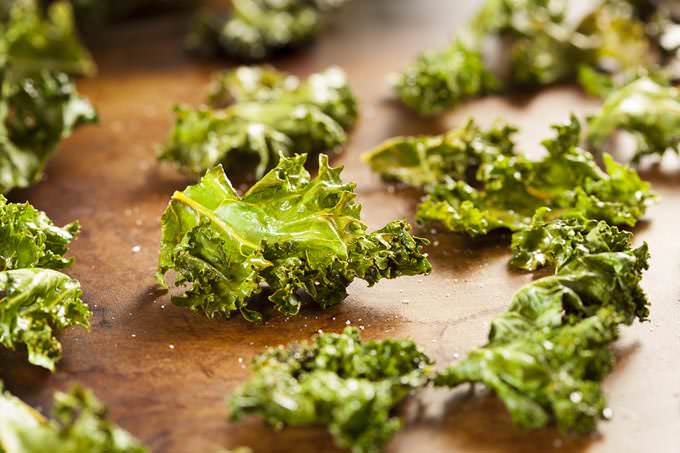
The new year offers a new start. If your resolution this year is to improve your health through your diet, cutting out fatty, sugary foods should be your first priority. This doesn’t mean you have to spend the year feeling unsatisfied and deprived, though.
There are a number of high-nutrient foods that can satisfy cravings for sweet, salty snacks while improving your physical and mental health, increasing your energy level and preventing common diseases and cancers. These ten satisfying, super-food snacks will help you start your new year the right way.
1. Kale chips
Kale isn’t just hot right now, it’s scorching. Dubbed the “Queen of Greens” by kale enthusiasts and health professionals alike, this dark leafy green is in the same family as cruciferous veggies like Brussels sprouts, cabbage and broccoli.
One cup of chopped kale has only 33 calories, but it’s packed with nutrients.
In fact, that same cup of chopped kale provides 9 percent of the RDA for calcium, 206 percent of the RDA for Vitamin A, 134 percent of the RDA for Vitamin C, and an astonishing 684 percent of the RDA for Vitamin K.
These serious antioxidants protect your skin from aging, reduce your cancer risk and promote bone health.
Kale also contains important minerals, including copper, potassium, iron and phosphorous, as well as lutein for eye health, and a lot of fiber to help lower cholesterol and reduce the risk of heart disease.
And because kale is effective at helping the blood clot, those who are on Warfarin and other anticoagulants should check with their doctor before starting a kale habit.
Raw kale might not suit everyone’s taste, but bake it into crispy, salty chips and you’ll be surprised at its complex flavor. Choose kale that is firm and dark green or purple and that has a strong stem. Smaller kale leaves are milder and more tender than the larger ones.
To bake up a batch of crispy kale chips, preheat your oven to 275 degrees and remove the large stems from the kale. Wash and dry the leaves, and cut them into 2-inch pieces. Toss the leaves with two tablespoons of olive oil and sprinkle them with sea salt. Bake for ten minutes, then turn the leaves and bake for ten more minutes, until they’re crispy.
For a spicier version of crispy baked kale, toss it with a mixture of 1/3 teaspoon each of toasted ground cumin and paprika and 1/8 teaspoon of cayenne pepper.
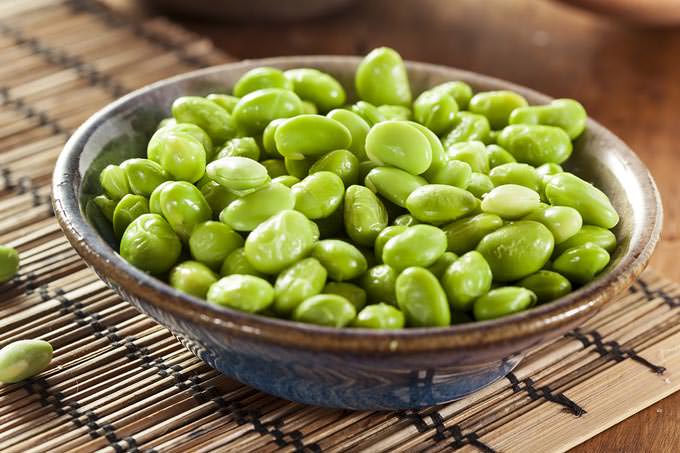
2. Edamame
Edamame, pronounced “ED uh MOM ee,” is a staple in Japanese restaurants, typically laid out in bowls on the table, much like chips and salsa in a Mexican restaurant.
Edamame is boiled green soybeans. It may not sound very delicious, but much like kale, it’s definitely worth trying, because if you love them like so many people love them, it will become a frequent snack that provides a number of health benefits.
A mere half cup of edamame packs only 120 calories, nine grams of fiber, 11 grams of protein, ten percent of the RDA for Vitamin C and iron, 8 percent of the RDA for Vitamin A and 4 percent of the RDA for calcium.
Fresh, in-shell edamame is difficult to find, but you can buy it shelled in the freezer section of your grocery store.
Steam or boil the frozen beans for three minutes, and add salt for a quick and easy snack.
For a fancier, tastier edamame treat, rinse a 12-ounce bag of shelled edamame in cold water to thaw it. Spread the beans out in a 9 x 13-inch baking dish and drizzle one tablespoon of extra virgin olive oil over them. Sprinkle with ¼ cup of grated parmesan and a little salt and pepper. Bake for 15 minutes, until the cheese is golden brown and the beans are crispy.
For a delicious edamame dip, thaw and steam 1-1/2 cups of edamame and toss it in a food processor with ½ cup water, ¼ cup chopped white onion, a tablespoon of chopped cilantro, a tablespoon of extra virgin olive oil, ½ teaspoon salt, 2 teaspoons chili powder and a 16-ounce can of cannellini beans, drained. Process until the dip is creamy and serve it with veggies or pita wedges.

3. Seasoned popcorn
Popcorn is a whole grain, which means it has lots of fiber and complex carbohydrates. The best way to pop your corn is with an air popper, and the worst way is in a microwavable bag.
Microwave popcorn is a health nightmare. The bag itself is lined with PFOA, which is short for the very long name of a chemical found in Teflon pans, and it has been linked to infertility and cancer.
Some brands contain trans fats, which the Center for Disease Control says is responsible for 20,000 heart attacks and 7,000 deaths every year.
Another chemical commonly found in microwave popcorn is TBHQ, which is made from butane. The artificial diacetyl butter flavoring used in microwave popcorn passes through the blood-brain barrier that keeps toxins out of your brain, and has recently been loosely linked to Alzheimer’s disease.
So now that you know what kind of popcorn to avoid, let’s look at some delicious, homemade popcorn recipes that you can whip up in a hurry and snack on throughout the day.
For spicy buffalo ranch popcorn, pop two quarts of corn. Mix together one tablespoon of dry ranch dressing mix, a tablespoon of celery salt, a teaspoon each of garlic powder and powdered sugar, and 1/8 teaspoon of cayenne pepper. Sprinkle ¼ teaspoon of vegetable oil over the dry mix and blend well. Sprinkle the mixture over the popcorn, shake it up to distribute it evenly, and enjoy.
For a classier popcorn snack, melt a tablespoon of butter and add a tablespoon of extra virgin olive oil and two teaspoons of crushed rosemary. Blend and toss this mixture with the popcorn, then sprinkle it with ¼ cup of freshly grated parmesan cheese, a teaspoon of garlic salt and a pinch of white pepper.
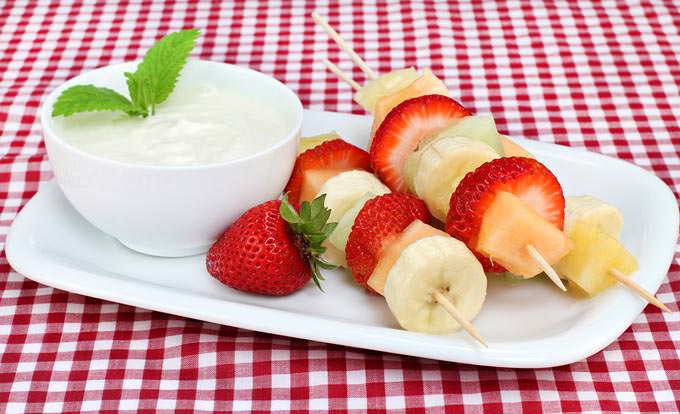
4. Fruit and Yogurt
Six ounces of yogurt contains a whopping 9 grams of protein, as well as calcium, vitamins B-2 and B-1, potassium and magnesium.
Those who eat two to three servings of low-fat dairy every day, including yogurt, have a 50 percent reduction in the risk of developing high blood pressure.
Always choose yogurt made with live and active cultures, which will be stated on the label.
This active bacteria aids digestion by maintaining a healthy level of microflora in the gut, and can help combat lactose intolerance, constipation, diarrhea, colon cancer and inflammatory bowel disease, as well as help prevent vaginal infections by helping to maintain a normal pH level.
We all know that fresh fruit is good for you, and if there are two foods that are meant to go together, it’s fruit and yogurt.
For a sweet and delicious frozen treat, drain a cup of yogurt by spooning it into a coffee filter placed inside a colander, and set the colander on a bowl.
Let it sit for an hour, then move the drained yogurt to a bowl and mix in two tablespoons of brown sugar and a teaspoon of vanilla. Dip strawberries, grapes, peaches or other fruit in the yogurt, place the dipped fruit on a cookie sheet covered in waxed paper, and pop it in the freezer for an hour or two.
Start (or end!) your day right with a healthy yogurt parfait. Spoon 1/3 cup of yogurt into a tall glass, top it with a layer of thawed strawberries and their juices, followed by another layer of yogurt, a layer of granola, more yogurt, more fruit, and more granola until the glass is full, and enjoy.
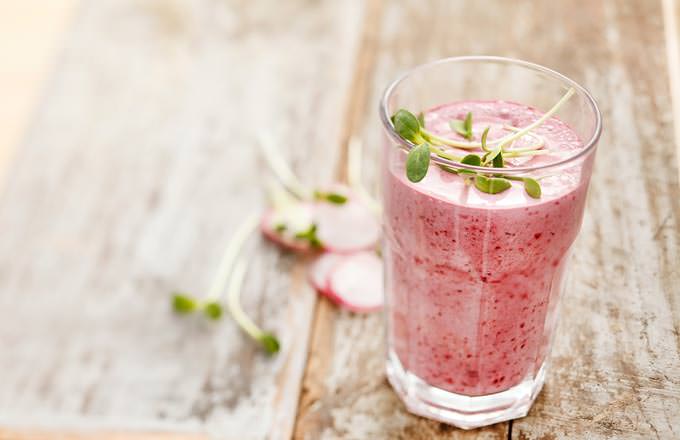
5. Smoothies
The best thing about a fruit smoothie is that it’s a filling, healthy breakfast that’s also suitable as an anytime snack. The second best thing about a fruit smoothie is that the possibilities for flavors are endless.
A single-serving smoothie starts with a base of ½ cup of skim milk and ½ cup of vanilla yogurt. These ingredients alone are full of nutrients, including protein and calcium.
Add a cup of ice before blending your smoothie for the chill and texture that make a smoothie a smoothie.
You can add any kind of fruit between the dairy and the ice, including the classics: bananas, pears, peaches, berries, mangoes and papayas are packed with vitamins and antioxidants and can be mixed and matched to suit your tastes.
The third best thing about a fruit smoothie is that you can pack in even more serious nutrients without changing the flavor of your favorite smoothie.
For example, you can add a cup of chopped spinach to any smoothie to add over ten times the RDA of Vitamin K, 300 percent of the RDA of Vitamin C, and 80 percent of the RDA of folate, among other nutrients, without altering the flavor of your concoction.
Likewise, a scoop of protein powder can make your smoothie a powerhouse, while a tablespoon of ground flaxseed will provide 8 grams of fiber and a dose of omega-3 fatty acid, and lignans that reduce the risk of breast cancer in women and prostate cancer in men.
A single tablespoon of chia seeds provides fiber, antioxidants, omega-3 fatty acid, protein and calcium, as well as make you feel fuller longer. To sweeten the deal, add a tablespoon of nutrient-packed almond butter or pure honey.
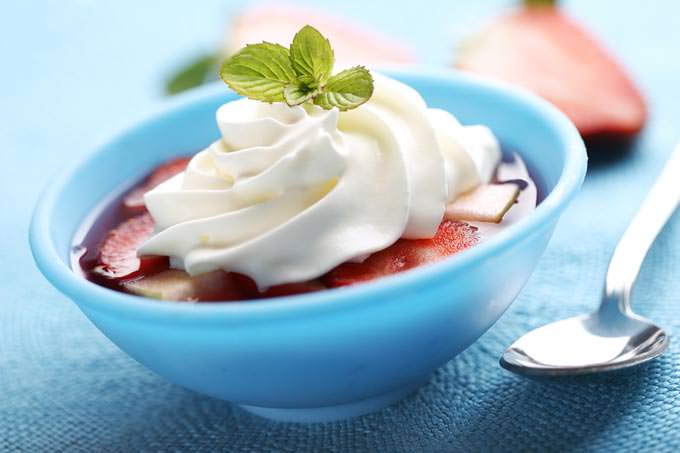
6. Sugar-free gelatin with whipped topping
Jello-O is a much-loved, sweet dessert that can satisfy your sugar cravings. A half-cup of sugar-free Jell-O has just 20 calories, and if you add a 2-tablespoon dollop of Cool Whip, it only adds an additional 25 calories.
While there’s not a lot of nutritional value in sugar-free Jell-O, it does have two amino acids, glycine and proline, that promote healthy nails, hair and skin, help protect your joints and improve digestive health.
Glycine in particular is helpful to your immune function, helps wounds heal faster and can even help improve the quality of your sleep.
Adding fruit to sugar-free Jell-O will increase its nutritional value and enhance the flavor and texture.
There are endless combinations of Jell-O flavors and fruit that will make your mouth, and your waistline, happy.
Add whole blueberries, raspberries or blackberries to your favorite Jell-O flavor. Chop up some strawberries to add to strawberry or orange Jell-O, or add pineapple chunks to lime Jell-O for a healthy, refreshing treat.
You can make your own Jell-O in a matter of minutes, although it takes several hours to set up in the refrigerator. For a mid-day treat at work, you can buy a package of single-serving pre-made sugar-free Jell-O cups.
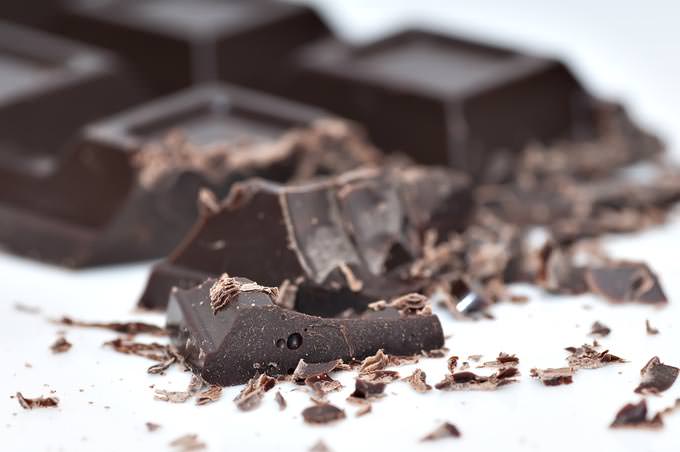
7. Dark chocolate
Chocolate is the food of the gods, probably because gods don’t gain weight. If you’re on a diet or trying to improve your overall health, you probably think that chocolate is off-limits. Happily, nothing could be farther from the truth.
Dark chocolate that contains at least 70 percent pure cocoa has proven to provide health benefits that other sweets don’t.
Dark chocolate helps to lower blood pressure by increasing the flow of blood to your brain and heart. It helps to improve your brain function and helps prevent blood clots.
The flavonoids in dark chocolate can also help prevent diabetes, and the heavy dose of antioxidants offered in dark chocolate help prevent and repair damage done to your cells by free radicals. To get the most out of the health benefits afforded by dark chocolate, eat a couple of ounces a few times a week. A single ounce of dark chocolate contains 150 calories.
When shopping for dark chocolate, quality is key. Lower-quality chocolate contains milk, palm or coconut fats, instead of cocoa butter, which is a fat that has a neutral effect on your cholesterol. You can find high-quality dark chocolate at higher end candy stores and most health food outlets.
If you’ve never been a big fan of the taste of dark chocolate, give it another try. It can be an acquired taste, and there are a few things you can do to help your taste buds find the subtle pleasure dark chocolate affords. First, keep your dark chocolate at room temperature. Smell the chocolate before you eat it to help increase the flavor profiles as they hit your taste buds.
Let the chocolate sit in your mouth to increase the temperature, and then let it melt. As the cocoa butter and other flavors are distributed across your tongue, the chocolate will lose its bitterness and explode into a complex array of flavors.

8. Anything sweet potato
Sweet potatoes are powerhouses of nutrients. They’re one of the best sources of beta carotene, which helps maintain eye health and boosts immunity.
This powerful antioxidant also helps prevent cancer and premature aging of the skin and other organs.
Sweet potatoes also contain high levels of Vitamin A, another important antioxidant in the fight for good health.
Sweet potatoes are packed with Vitamin B-6, which helps prevent heart attacks; Vitamin C for bone, digestive and skin health; Vitamin D for better immunity and higher energy; iron for optimum blood cell production and resistance to stress, magnesium for healthy blood, bones and nerve function; and potassium, which is essential for regulating the heartbeat.
Sweet potato chips are a homemade treat that can satisfy a craving for sweet and salty snacks.
Preheat your oven to 450 degrees and coat two baking sheets with a teaspoon of oil each. Slice 1-1/2 pounds of sweet potatoes into rounds 1/8-inch thick and toss with 2 teaspoons vegetable oil and 2 teaspoons distilled white vinegar. Lay the rounds on the baking sheets in a single layer, and sprinkle them with kosher salt and freshly ground pepper.
Place one pan on a rack in the top third of the oven, and the other on a rack on the bottom third. Bake for 25 minutes, until brown and crispy, swapping the pans halfway through.
For baked sweet potato fries, slice the sweet potatoes into French fry-sized strips, toss with a little olive oil and lay them out in a single layer on a baking sheet coated with one teaspoon of oil.
Season with garlic salt and pepper, and bake for 10 minutes at 425 degrees. Move the rack up a notch and broil for two minutes, flip the fries and broil for two more minutes, until they’re dark and crispy.
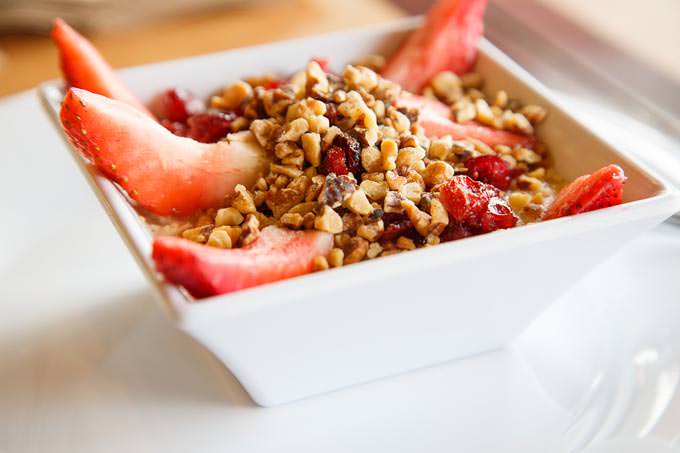
9. Oatmeal with honey and fruit
Oatmeal contains beta-glucan, a type of fiber that is shown to lower cholesterol when eaten on a regular basis.
Starting your day with a bowl of oatmeal is a great way to stave off hunger, enhance your immune system and protect your body against bacterial infections.
Oats also contain a rare antioxidant compound called avenanthramide, which reduces your risk of heart disease and helps stabilize your blood sugar to lower your risk of developing type-2 diabetes.
The whole-grain fiber in oats helps protects against breast cancer. While steel-cut oats have more nutrients than rolled oats, they take longer to cook.
The best way to make oatmeal is to add one part oats to two parts of cold water. Bring them to a simmer, and cook steel-cut oats for 30 minutes or rolled oats for 15.
Oatmeal is an ideal vehicle for add-ins that increase the flavor, texture and nutritional value. A tablespoon of honey and a handful of fresh berries, chopped apples or sliced pears is a delicious, nutrient-rich breakfast or snack that packs a healthy punch.
Don’t limit yourself to fruit and honey, though. Nut butters, including peanut, cashew and almond butter, will sweeten your oatmeal and add protein and other nutrients. A half-teaspoon of vanilla or almond extract will add flavor to plain oatmeal.
Sprinkle shredded coconut, good-quality dark chocolate chips or spices like cinnamon, cloves or nutmeg over your oatmeal, or add granola for a nice crunch. Two tablespoons of wheat germ or chia seeds will add a huge amount of antioxidants and nutrients without altering the flavor of your oatmeal.
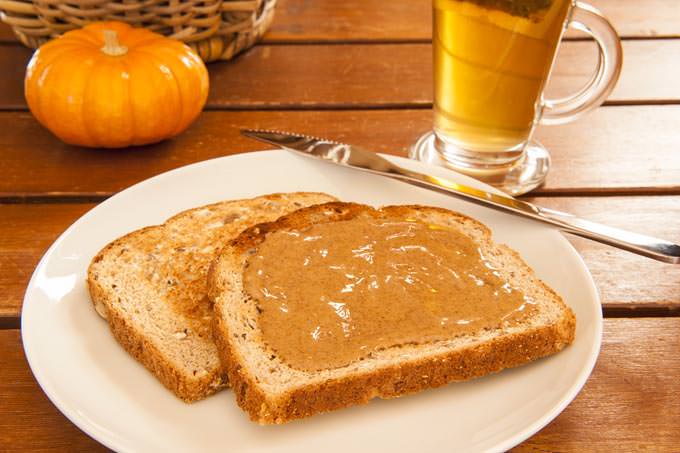
10. Almond butter
Anywhere you can use peanut butter, you can use almond butter. In fact, almond butter is more nutritious than peanut butter, with 25 percent of the recommended daily allowance for Vitamin E, a powerful antioxidant.
It contains more omega-3 fatty acids than peanut butter.
Eating almond butter regularly can help maintain your blood sugar to reduce your risk of diabetes, help reduce bad LDL cholesterol and help control your blood pressure.
Almond butter also costs more than peanut butter, but making it is much less expensive, incredibly easy, and ensures the only ingredient is almonds. Make sure you have some time, though: it can take up to 25 minutes of processing to turn your almonds into almond butter.
To make your own almond butter, simply place one to three cups of roasted or raw almonds in a good-quality food processor equipped with an “S” blade. Turn on the food processor, and wait. The almonds will soon become crumbly, and after ten minutes or so, will begin to form a ball in the processor. Five to ten minutes later, it will seemingly magically become creamy, smooth almond butter.
Almond butter is delicious and versatile. Spread it on apples, toast, pancakes or waffles. Substitute it for tahini in hummus or for peanut butter in cookies. Drop a dollop in smoothies and on top of your oatmeal or bowl of vanilla frozen yogurt. Puree it with ricotta cheese to make a delicious dip for apples, pears, celery and carrots. Or just eat it right off the spoon when you’re craving a sweet treat and no one’s looking.


They aren’t that tasty.